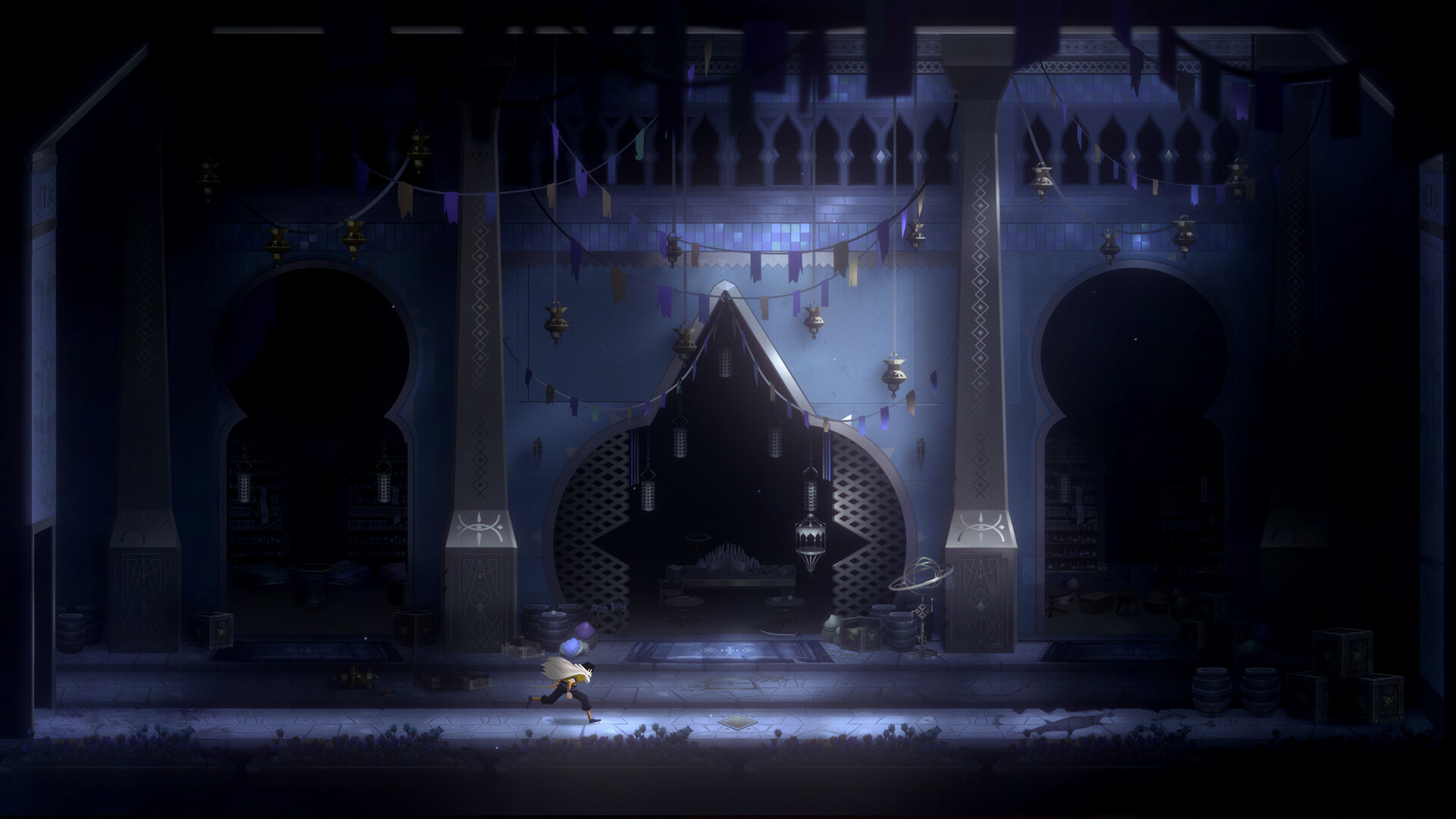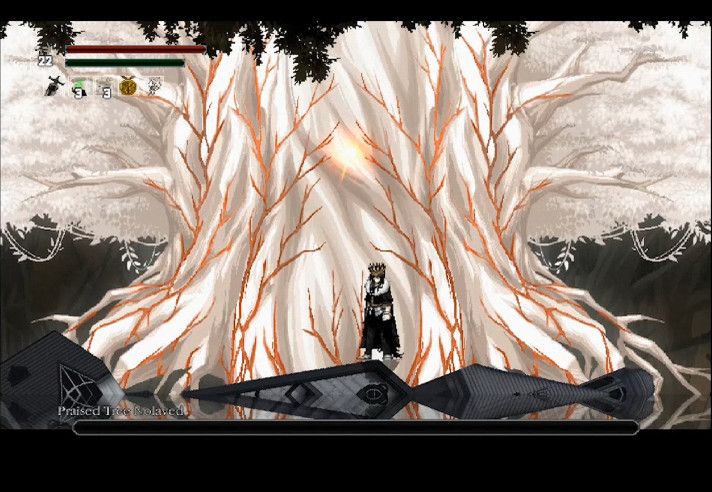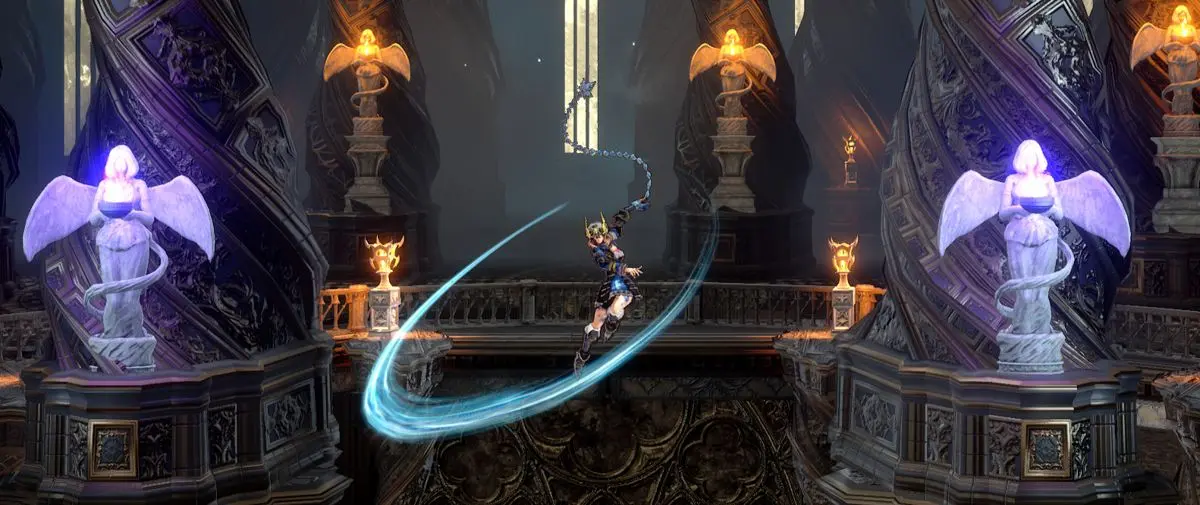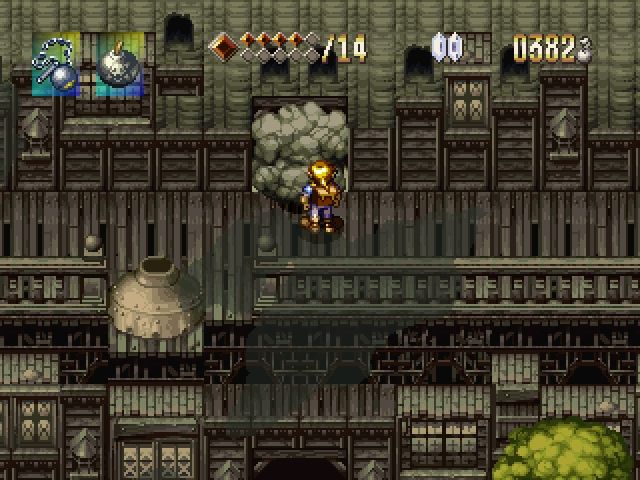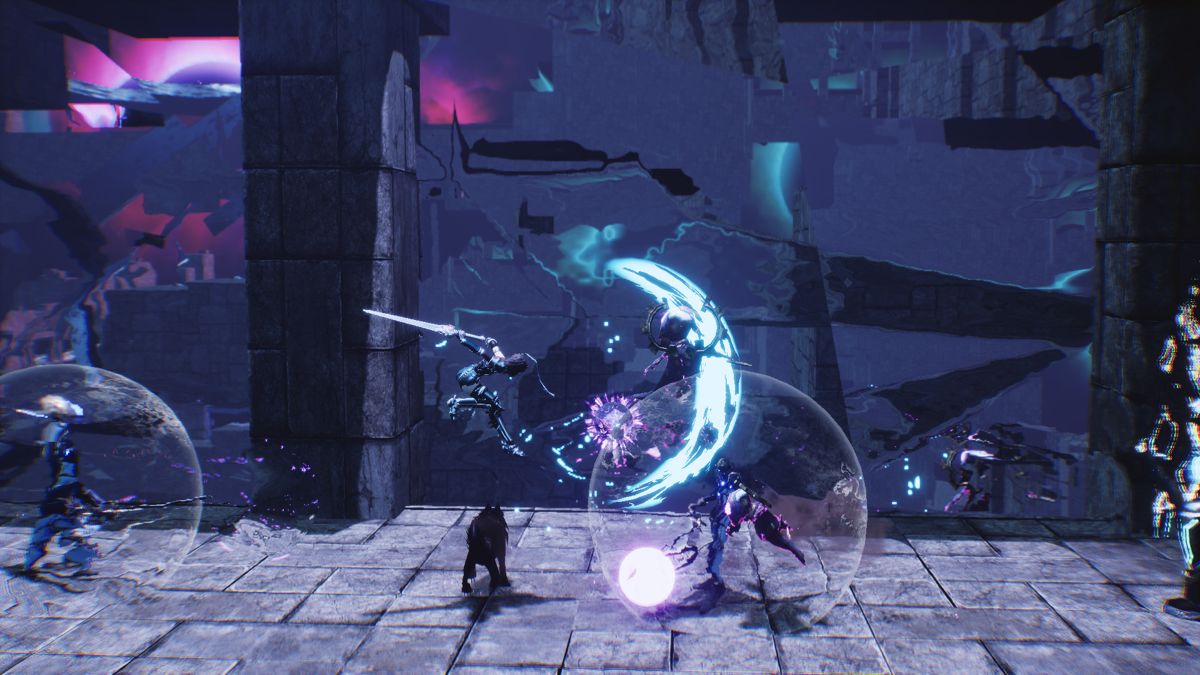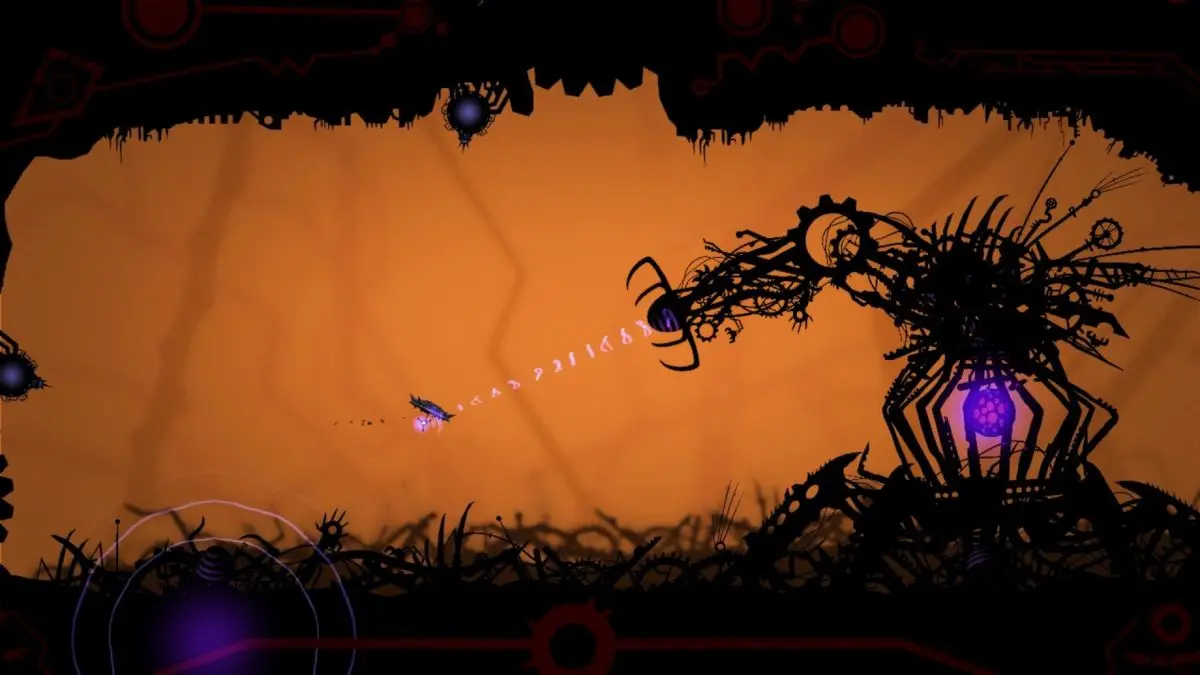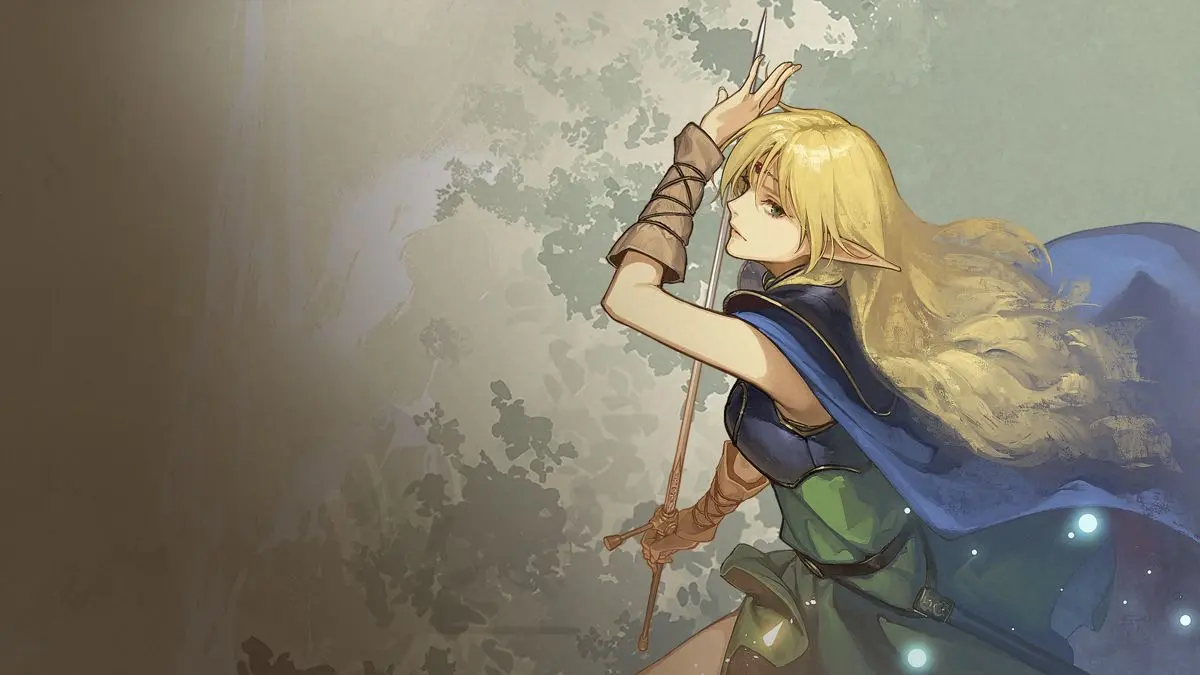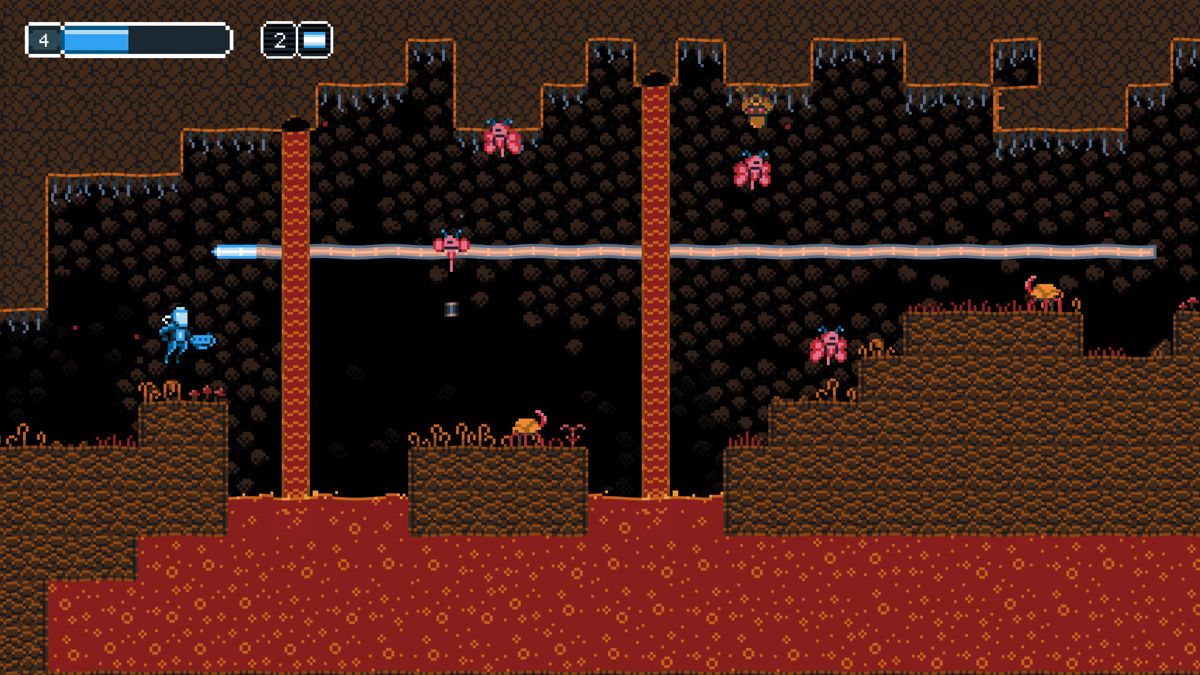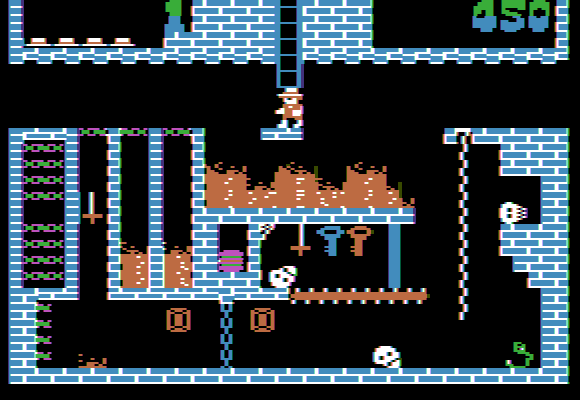Results
Ytash
aerial combat, dark, silent protagonist
Ytash is a fast-paced, 2D action game. Ignite your sword and explore the dark depths and towering heights of a forgotten island that consumed itself long ago.
Void Memory
pixel art, challenging, mysterious
You, who was born in a world full of darkness, should wander this hollowed land to find the Relics for a person who created you. However, fallen and lost souls with trap-filled trials await in your course of doing so. Can you survive in this crumbling world and start a new era?
Bloodstained: Ritual of the Night
igavania, grindy, hidden areas
Bloodstained: Ritual of the Night is a critically acclaimed Metroidvania-style action-adventure game developed by Koji Igarashi, the godfather of the Igavania subgenre. Drawing inspiration from his work on the iconic Castlevania series, Igarashi has crafted a meticulously designed game that pays homage to the genre's roots while introducing fresh mechanics and elements. The game stands out for its intricate level design, featuring a vast and interconnected castle filled with labyrinthine passages, hidden rooms, and secret shortcuts. Exploration is rewarded with a wealth of power-ups, weapons, and equipment, allowing players to backtrack and access previously inaccessible areas in true Metroidvania fashion. Combat is a central pillar of the experience, with a diverse array of enemies that require strategic positioning and skillful use of various weapons and abilities. Bloodstained boasts a vast arsenal, including swords, spears, whips, and a variety of magical abilities, each with its own unique properties and attack patterns. One of the game's standout features is the Shard system, which allows players to equip and mix-and-match various abilities and passive bonuses, creating unique character builds tailored to their playstyle. This system adds depth and replayability, encouraging experimentation with different shard combinations. Visually, the game showcases a stunning art style, with meticulously crafted backgrounds that capture the gothic horror atmosphere. The attention to detail in the character designs and enemy animations is truly impressive, evoking a sense of nostalgia while maintaining a distinct and modern aesthetic. Overall, Bloodstained: Ritual of the Night is a must-play for fans of the Metroidvania genre, offering a challenging and rewarding experience that pays homage to its roots while introducing fresh ideas and mechanics that solidify its place as a modern classic.
Alundra
fantasy, challenging, environmental puzzles
Alundra is a critically acclaimed action-adventure RPG developed by Matrix Software and published by Working Designs for the PlayStation in 1997. Often compared to The Legend of Zelda series, Alundra stands out for its darker, more mature narrative and challenging puzzle design. The game follows the titular protagonist Alundra, a young elf with the ability to enter people's dreams. He arrives in the village of Inoa, which is plagued by deadly nightmares. The story takes a grim turn as villagers begin dying in their sleep, and Alundra must use his dream-walking abilities to save them and uncover the source of the evil. Key features that set Alundra apart in its genre include: 1. Complex, often brutally difficult puzzles that require precise timing and execution. 2. A darker, more mature storyline dealing with themes of death, fate, and religion. 3. Smooth, fast-paced combat with a variety of weapons and magic. 4. Detailed 2D sprite work and environments, with some pseudо-3D elements. 5. A memorable soundtrack composed by Kohei Tanaka. The game's difficulty, particularly in its puzzles and boss fights, is notably higher than many of its contemporaries. Its dream-exploration mechanic adds a unique twist to the typical dungeon-crawling formula. Alundra received high praise for its storytelling, level design, and challenge, cementing its place as a cult classic in the action-RPG genre.
AeternoBlade II
fantasy, challenging, hidden areas
AeternoBlade II is an action-platformer with RPG elements, released in 2019 as a sequel to the original AeternoBlade. The game features three playable characters: Freyja (returning from the first game), Bernard, and Felix, each with unique abilities and fighting styles. Notable features include: 1. Time manipulation mechanics: Players can rewind time, create time clones, and freeze enemies, adding strategic depth to combat and puzzle-solving. 2. Combo-based combat system: The game emphasizes chaining attacks and utilizing each character's unique skills to defeat enemies efficiently. 3. Dimension-shifting gameplay: Some levels require players to switch between different dimensional planes to progress and solve puzzles. 4. Multiple gameplay perspectives: The game alternates between 2D side-scrolling sections and 3D arena-style combat areas, offering variety in gameplay. 5. Skill tree system: Characters can be customized and upgraded through a branching skill tree, allowing for different playstyles. 6. Intertwining storylines: The narrative follows the three protagonists' separate but connected journeys, eventually converging into a unified plot. 7. Boss battles with puzzle elements: Many boss fights incorporate time manipulation and environmental interaction, requiring both combat skills and problem-solving. 8. New Game+ mode: Allows players to replay the game with upgraded characters and access previously locked areas. While AeternoBlade II builds upon its predecessor, it received mixed reviews due to technical issues at launch and some criticism regarding level design and controls. However, it maintains a niche following among fans of the genre who appreciate its unique time manipulation mechanics and character variety.
Adventure Time: Hey Ice King! Why'd You Steal Our Garbage?
fantasy, environmental puzzles, bright visuals
"Adventure Time: Hey Ice King! Why'd You Steal Our Garbage?" is a 3D platformer game developed by WayForward Technologies and published by D3Publisher for the Nintendo 3DS and Nintendo DS in 2012. The game is based on the popular Cartoon Network animated series "Adventure Time." The game's story follows the antics of the Ice King, who has stolen various items from the Land of Ooo, including garbage from the Tree Fort belonging to Finn and Jake. As Finn and Jake, players must navigate through various levels and environments, collecting the stolen items and battling against the Ice King's minions. One unique aspect of the game is its use of the 3DS and DS's dual-screen functionality. The top screen displays the main gameplay action, while the bottom screen serves as a map and inventory screen. Players can also use the touch screen to interact with certain objects and puzzles. The game features a mix of platforming, puzzle-solving, and combat mechanics. Players can use Finn's sword and Jake's stretchy powers to overcome obstacles and defeat enemies. The game also incorporates elements of exploration, as players can uncover hidden areas and collectibles throughout the levels. "Hey Ice King! Why'd You Steal Our Garbage?" features a distinctive art style that faithfully captures the quirky and whimsical aesthetic of the "Adventure Time" show. The game's levels are based on various locations from the series, such as the Candy Kingdom, the Ice Kingdom, and the Land of the Dead. While the game received generally positive reviews for its faithful adaptation of the source material and its charming visual style, some critiques noted that the gameplay mechanics could be repetitive at times and that the overall experience was relatively short. Overall, "Adventure Time: Hey Ice King! Why'd You Steal Our Garbage?" is a solid tie-in game that captures the essence of the beloved animated series, offering fans a chance to experience the Land of Ooo in an interactive and engaging way.
Insanely Twisted Shadow Planet
environmental puzzles, sci-fi, pixel art
Insanely Twisted Shadow Planet is a modern take on the classic shoot 'em up genre, developed by FuzzyEyes and published by Microsoft Studios. While it may appear simplistic at first glance, this game offers a unique and immersive experience that sets it apart from its contemporaries. One of the standout features of Insanely Twisted Shadow Planet is its distinctive art style. The game world is presented in a striking silhouette aesthetic, with intricate backdrops and enemy designs that are both visually stunning and unsettling. This approach creates a sense of mystery and foreboding, adding depth to the gameplay experience. Gameplay mechanics in Insanely Twisted Shadow Planet are not limited to traditional shoot 'em up elements. Players must navigate through intricate, maze-like levels, solving environmental puzzles and utilizing various power-ups and abilities to progress. This introduces a layer of exploration and problem-solving that complements the action sequences. One notable aspect of the game is its emphasis on narrative and storytelling. While the plot is conveyed through minimal text and visual cues, it manages to captivate players with its enigmatic and atmospheric presentation. The game's world is rich with details and lore, inviting players to uncover its secrets and piece together the underlying story. Insanely Twisted Shadow Planet also features a dynamic and reactive soundtrack that evolves alongside the gameplay. The music, composed by Steve Burke, adds an extra layer of tension and intrigue, seamlessly blending with the visuals to create an immersive and atmospheric experience. Overall, Insanely Twisted Shadow Planet offers a refreshing take on the shoot 'em up genre, combining engaging gameplay mechanics with a distinct visual style and a compelling narrative. Its attention to detail and innovative design elements make it a standout title for fans of the genre seeking a unique and memorable experience.
Record of Lodoss War: Deedlit in Wonder Labyrinth
environmental puzzles, pixel art, hidden areas
Record of Lodoss War: Deedlit in Wonder Labyrinth is a 2D side-scrolling action platformer developed by Team Lidra and published by Playism in 2021. It's a spin-off game set in the iconic fantasy world of Record of Lodoss War, a popular Japanese light novel, anime, and video game series. The game's narrative focuses on the legendary elf, Deedlit, as she finds herself trapped within a mystical labyrinth filled with enigmatic puzzles and formidable foes. The game's visuals pay homage to the classic Record of Lodoss War aesthetic, with detailed sprite work and vibrant pixel art capturing the fantasy world's charm. The soundtrack, composed by Kenji Ito, who worked on the original Lodoss War anime, adds an atmospheric and nostalgic touch to the experience.
Escape from Thethys
sci-fi, pixel art, challenging
Escape from Thethys is a 2D metroidvania-style action-platformer released in 2018. The game is set on the underwater moon Thethys, where the player takes control of a deep-sea diver trying to escape a mysterious underwater facility. Key features of the game include: 1. Procedurally generated levels: While the overall structure of the game world remains consistent, the specific layouts of rooms and placement of items change with each playthrough, enhancing replayability. 2. Unique weapon system: The player's primary weapon is a harpoon gun that can be upgraded and modified throughout the game, allowing for various combat strategies and puzzle-solving approaches. 3. Environmental hazards: The underwater setting introduces challenges like pressure management and oxygen conservation, adding an extra layer of complexity to exploration. 4. Boss battles: The game features large-scale encounters with mutated sea creatures and advanced security systems. 5. Multiple endings: The player's choices and actions throughout the game can influence the final outcome, encouraging multiple playthroughs. 6. Retro-inspired visuals: The game uses a pixel art style reminiscent of 16-bit era games, but with modern lighting and particle effects to enhance the underwater atmosphere. 7. Nonlinear progression: While there is a main story path, players can often tackle areas in different orders, discovering alternate routes and secrets. 8. Limited resources: The game emphasizes resource management, with scarce ammunition and health pickups encouraging careful play. Escape from Thethys stands out in the metroidvania genre for its unique setting and the way it incorporates underwater survival elements into the traditional exploration and upgrade-based gameplay.
Montezuma's Revenge
challenging, environmental puzzles, labyrinthine
Montezuma's Revenge, released in 1984 for various platforms, is a notoriously challenging and unforgiving platformer that stands out for its intricate level design and punishing gameplay mechanics. Unlike many contemporaneous platformers that focused on linear progression, Montezuma's Revenge features a non-linear, maze-like structure with interconnected rooms and multiple paths to explore. Each level is a labyrinth filled with deadly obstacles, treacherous traps, and navigational puzzles that require precise timing and meticulous planning. The game's difficulty stems from its strict resource management system. Players must carefully manage their limited supply of keys, which are required to unlock doors and access new areas, as well as their stock of torches, which serve as both a light source and a weapon against enemies. Running out of either resource can lead to an untimely demise, forcing players to restart the level from the beginning. Another unique aspect of Montezuma's Revenge is its scoring system, which heavily incentivizes exploration and risk-taking. Players earn points not only for collecting treasures but also for performing daring feats, such as jumping over deadly pits or navigating through treacherous rooms filled with hazards. This encourages players to take calculated risks and thoroughly explore every nook and cranny of each level, adding an extra layer of challenge and replayability. Despite its age, Montezuma's Revenge remains a revered classic among hardcore platformer fans, praised for its uncompromising difficulty, intricate level design, and the sense of accomplishment that comes with mastering its demanding gameplay mechanics.
Filters
Search Term
Properties
Platforms
Tags (include)
Tags (exclude)
Get Your Game Noticed
Advertise your game with MetroidvaniaDB and reach a community of people who know exactly what they're looking for:
Your game.
Native & Banner Ad Spots
Multi-week Discounts
Game Launch Packages
Discounts for Indie Developers

